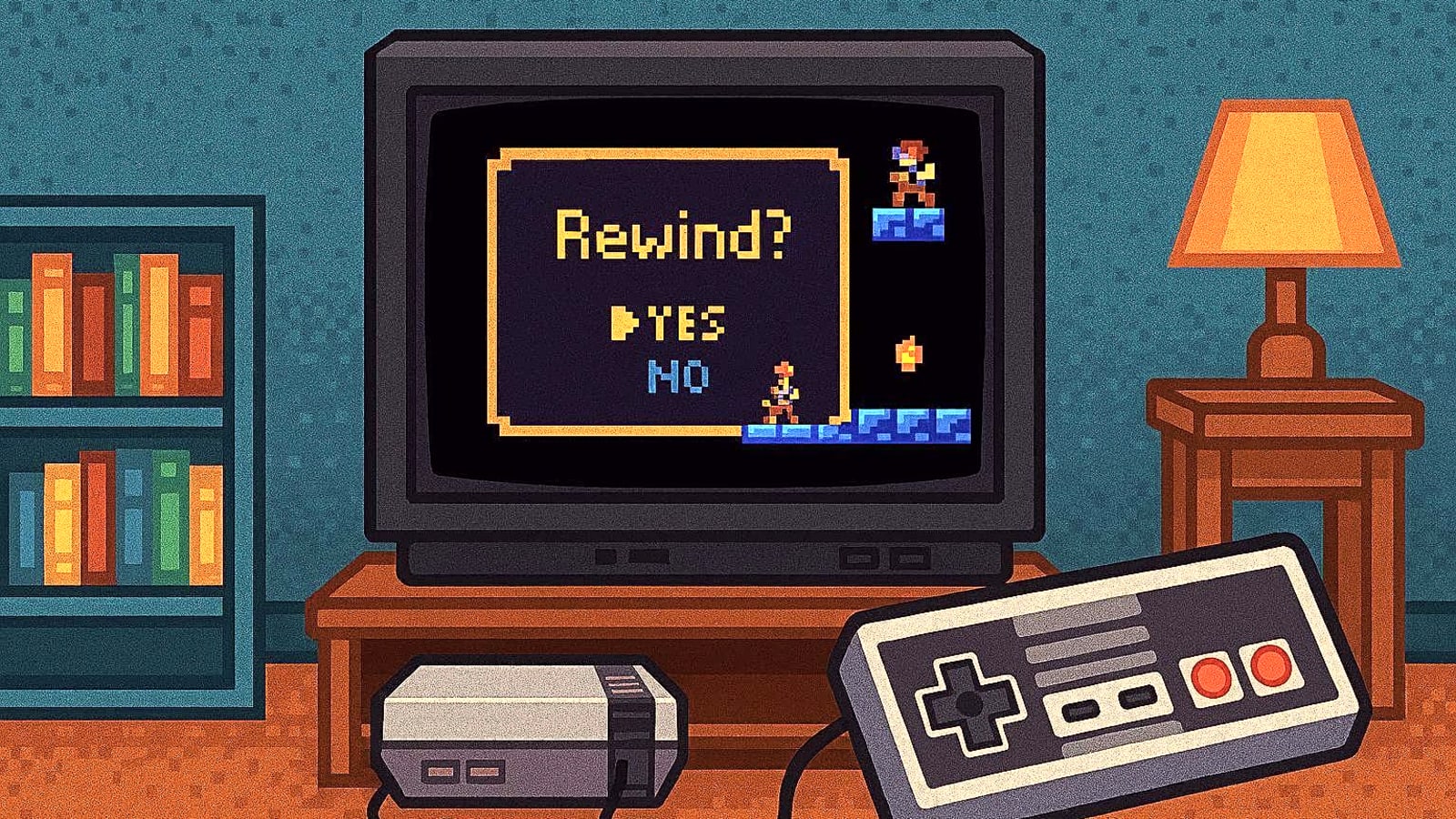
Once upon a time, in a pixelated land far, far away, gamers had to beat entire levels without dying. No checkpoints. No mercy. Just raw, unfiltered punishment. And if you slipped up? Back to the beginning, champ. But now, in the age of Nintendo Switch Online and emulator wizardry, save states and rewind functions have become the holy grail for anyone revisiting the 8-bit trauma of their youth. The question is—does using them make you a fraud?
Spoiler: Most retro gamers don’t care anymore. And the ones who do? They’re probably still trying to beat the original Metroid without a map.
The Great Save State Debate: Guilt Is So 2005
A recent ResetEra thread lit the fuse on this nostalgia bomb, asking: “Do you use save states when playing challenging retro games? If so, do you feel guilty about it?” And the responses? A glorious mix of catharsis, sarcasm, and existential dread.
User ScOULaris kicked things off with a confession that would make old-school purists clutch their CRTs: he used to think save states were cheating. Like, robbing yourself of the “intended experience” kind of cheating. But after replaying Castlevania: Bloodlines and Super Castlevania IV, he had an epiphany—maybe getting sent back 20 minutes because of one cheap death isn’t a badge of honor. Maybe it’s just bad design.
“I Pay Taxes. I’m Using Rewind.”
PeakPointMatrix dropped what might be the most relatable take of the decade:
“I have to pay taxes, cook, work, clean, enjoy life. Why on god’s green earth would I waste the very precious few moments I have to game redoing an entire stage + boss because I died once in some archaic save/checkpoint system?”
Honestly, preach.
This isn’t about cheating. It’s about survival. Adult gamers aren’t trying to prove anything—they’re trying to squeeze joy out of a 30-minute gaming window between work emails and existential dread. If rewind lets you dodge a death trap in Mega Man without rage-quitting, then rewind is the hero we deserve.
Nostalgia vs. Masochism: Where’s the Line?
Not everyone’s on board, of course. Some players still treat retro games like sacred texts. User andythedrifter insists on playing under the “intended rules,” arguing that save states make the experience feel hollow. “Might as well just watch a playthrough on YouTube,” he says, presumably while sipping black coffee and staring into the void.
Others, like axbaxmit, use save states for training but won’t count the game as “beaten” unless it’s done on original hardware. That’s dedication. Or delusion. Hard to tell.
Then there’s Dunfish, who claims to have lost his wife and all his friends after using multiple save states in Krusty’s Super Fun House. Extreme shame. Deep regret. Possibly satire. Definitely hilarious.
Rewind Isn’t Cheating—It’s Therapy
Let’s be real: retro games were hard because they had to be. Limited memory, short runtimes, and a business model built on making you replay the same level 50 times. It wasn’t about challenge—it was about padding. And now that we’ve evolved past that, why cling to the pain?
Save states and rewind aren’t shortcuts. They’re tools. They let you experience the game without the grind. They let you appreciate the art, the music, the mechanics—without getting sucker-punched by a pixel-perfect enemy placement designed to ruin your day.
Final Boss: Your Time Is Worth More Than Purity
If you’re still clinging to the idea that using save states makes you less of a gamer, ask yourself this: Are you having fun? Because that’s the point. Not proving your worth to a cartridge from 1987. Not suffering through a level you’ve already beaten five times. Just fun.
So go ahead. Rewind that jump. Save before the boss. Cheat death like a time-traveling wizard. The only thing you’re really cheating is frustration. And honestly? That’s the most retro thing you can do.
More must-reads:
- Could Travis Kelce's huge announcement add more fuel to retirement rumors?
- TE Premium Draft Strategy explained: Top fantasy football targets for 2025
- The 'Most NFL 1,000-receiving yard seasons' quiz
Breaking News
Trending News
Customize Your Newsletter
 +
+
Get the latest news and rumors, customized to your favorite sports and teams. Emailed daily. Always free!








